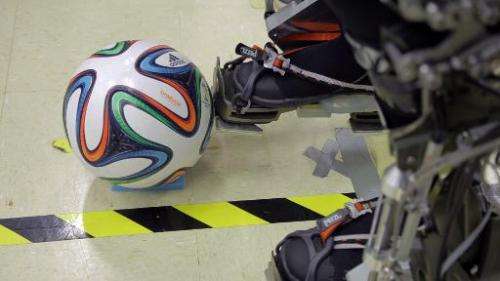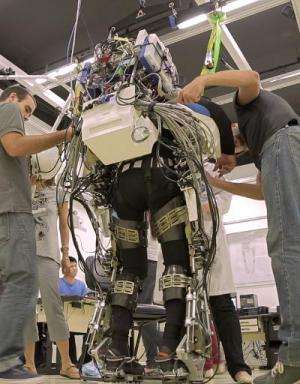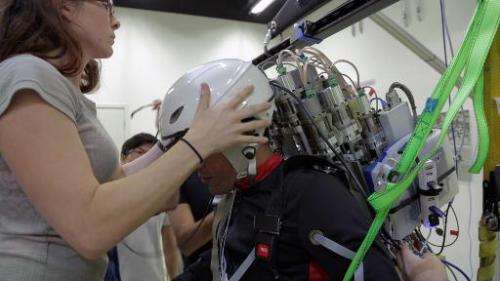World Cup robo-suit team dismiss underwhelmed critics

The team behind the brain-controlled suit that helped a paraplegic kick a football at the World Cup opening ceremony defended itself Saturday against critics who said the demonstration was underwhelming.
In the buildup to Thursday's opening, much fanfare surrounded the project led by Brazilian neuroscientist Miguel Nicolelis and meant to showcase Brazil's scientific and technological achievements.
The Brazilian government's World Cup website had tantalized visitors' imaginations with a description of how the robotic exoskeleton would enable a paralyzed person to "stand up from his wheelchair, walk for around 25 meters (yards) on the pitch and make the first kick of the World Cup."
In reality, the demonstration was somewhat less spectacular.
Paraplegic Juliano Pinto, standing in the Iron Man-like suit with two handlers appearing to support it on either side, gave a quick tap to a football placed in front of him on a red ramp.
The entire display lasted about three seconds, and left many viewers tweeting their disappointment.
"The concept was great but the footage I've seen of that exoskeleton World Cup kick-off was very disappointing," wrote @quepasanene.
Fellow Twitter user @filipemalafaia agreed: "I was expecting something grandiose, but they barely showed it in the broadcast."

Nicolelis, himself an avid social media user with a flare for creating buzz around his research, took to Twitter to defend the demonstration, blaming FIFA for cutting part of it.
"FIFA must answer for the editing of the images, which prevented the demonstration from being transmitted in its entirety," he wrote.
But a spokeswoman for the project later acknowledged the entire demonstration had in fact been broadcast.
"It was just the kick. They showed what happened in its entirety," Caroline Devide from the project's communications team told AFP.
"He didn't take any steps."
Tetraplegic Congresswoman Mara Gabrilli said the demonstration had been a disappointment for paralysis victims.

Nicolelis "didn't deliver what he promised and misled tons of patients," she told O Estado de Sao Paulo newspaper.
But Pinto, the 29-year-old car crash victim who demonstrated the exoskeleton, said the experience had been "extraordinary."
"It's been seven years since my medulla injury, without being able to move my lower limbs," he told news website G1.
"After all that, to be able to regain control of them, to control the destiny of your feet... The exoskeleton gave that to me again, it brought back the movements I lost."
Nicolelis posted a link to the interview on Twitter, saying: "That's the opinion that counts!"
© 2014 AFP




















